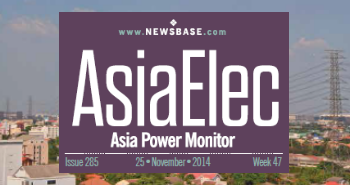South Australia to restart mothballed gas power generators to shore up security

The Australian Energy Market Commission (AEMC) approved a rule change last week allowing South Australia to restart mothballed gas power generators in the event of a supply shortage.
The decision grants the Australian Energy Market Operator (AEMO) the authority to contract Engie to restart the 63-MW Snuggery and 75-MW Port Lincoln peaking generators if required, ahead of the completion of the long-delayed New South Wales interconnector.
South Australian Energy Minister Tom Koutsantonis welcomed the approval, stating that the state government would take all necessary measures to secure backup generation and maintain supply reliability.
“I am glad the AEMC has agreed to our request, allowing the South Australian government to direct Engie to use the two mothballed power stations if needed, until the interconnector comes online,” Koutsantonis said.
The rule change follows concerns raised in AEMO’s 2024 Electricity Statement of Opportunities, which identified potential reliability shortfalls, including in South Australia.
Previously, AEMO lacked the authority to call upon mothballed generators, even if they were technically available. The state government has argued that the issue stems from the previous administration’s sale of state-owned backup generation, which it claims has contributed to ongoing energy security challenges.
Additionally, the government has requested Engie to assess the feasibility of using synthetic fuels should the generators be required. The company is currently evaluating this option.
“The state government makes absolutely no apology for taking decisive action to secure appropriate backup generation, ensuring consistency of supply in case of a gas shortage,” Koutsantonis said. “In any system, it makes sense to back up thermal generation, and the backup for thermal generation is diesel.”
“This is not unusual – almost every jurisdiction in the country maintains diesel capacity,” he added.
South Australia has faced energy challenges over the past two years primarily because of the decommissioning of gas-fired power stations and delays in critical infrastructure projects. The mothballing of gas-fired power stations such as Torrens Island and Osborne has heightened the risk of blackouts, prompting the Australian Energy Market Operator (AEMO) to seek emergency reserves to ensure electricity supply during peak periods.
The state has significantly expanded its renewable energy use, relying on wind and solar power to cover up to three-quarters of electricity consumption. But these sources can be highly intermittent, creating the risk of shortages when wind speeds are low and there is limited sunlight, unless there is sufficient backup generation. Delays in the EnergyConnect transmission project, which is crucial for accommodating over 2 GW of renewable energy, have compounded risks to grid stability.
In addition to ensuring backup conventional power generation, South Australia is also investing in energy storage solutions. A notable project is the 150-MW/300-MWh energy storage system in Bungama, expected to be operational by the first quarter of 2026.


Follow us online